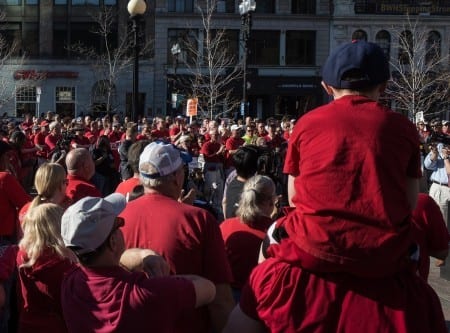
August 22, 2016
BY JASON PRAMAS @JASONPRAMAS
Now that broadband internet is a public utility, both cable companies and telephone companies need to pay for public access television — not try to defund it
Last week, the Boston Institute for Nonprofit Journalism (BINJ) was pleased to welcome the Alliance for Community Media (ACM) 2016 Annual Conference to our mini metropolis. Staff, board members, and volunteers from public access television stations from the around the nation were camped at the Westin Boston Waterfront Hotel — sharing skills, networking, and, unfortunately, discussing the best way to survive in a hostile political climate. Because despite being one of America’s greatest remaining democratic communications resources, public access TV is perennially fighting to preserve its funding. In honor of the ACM conference, I wrote the following commentary for the pilot episode of Beyond Boston — a video news digest that BINJ just launched this month in partnership with several area public access TV stations, including: Brookline Interactive Group (BIG), Cambridge Community Television (CCTV), Malden Access TV (MATV), and Somerville Community Access Television (SCAT). Our aim is to feature news produced at local public access TV stations and link it to news we produce at BINJ. Expanding the reach of all our work by effectively merging our audiences. Check out the show on participating stations and on the new Beyond Boston YouTube channel. And read on to get some perspective on the crisis facing a vital community media resource.
Public access television is one of greatest innovations of the grassroots movement for media democracy in the last half century. Also known as community television, it has helped cities and towns nationwide to have their very own cable TV channels. Allowing residents to keep up with local news and views while enjoying a wide variety of arts and entertainment programming — most of which is produced by their family, friends and neighbors. Filling the gap in local nonprofit media options left by PBS and NPR.
One of the best things about public access television is the way it’s funded. Community media pioneers like noted filmmaker George Stoney helped craft regulations back in the late 1960s that made everything go. They were based on the principle that cable companies should pay an annual franchise fee to cities and towns in exchange for being able to build out their systems on municipal rights-of-way. In other words, companies like Comcast have to pay local governments for stringing their cables along public streets. That money can then be used to equip and sometimes staff public access stations. And those stations get used by the local population to celebrate their culture. Expanding free speech in the process.
That funding mechanism worked pretty well — despite a bunch of political speed bumps there’s no time to discuss today — until the telephone companies joined cable companies in offering broadband internet service about a decade back. Soon people in many places were getting all the content carried over the old cable systems and much much more from both telephone companies like Verizon and cable companies like Comcast. This created a problem for funding public access stations because cable companies offering broadband still had to pay the franchise fee to local governments that is used to finance those stations. But telephone companies that now also provide broadband don’t have to pay that franchise fee.
This has potentially provided the cable companies an opening to get rid of the franchise fee by stating that it’s unfair that they have to pay when the telephone companies don’t. Putting public access funding in extreme jeopardy. However, last year, the Federal Communications Commission ruled that broadband internet service is a public utility. Raising the possibility that both cable companies and telephone companies could be mandated to pay a franchise fee to cities and towns in exchange for stringing their broadband wires on public land.
The FCC is still figuring out how to proceed on that front, and they are under intense pressure from cable companies and telephone companies to free them from all responsibility for funding public access stations. So it is critical that everyone who supports public access media gets together with other interested folks in your community and starts building a new grassroots movement to demand the FCC apply the franchise fee to both cable companies and telephone companies. A win on this issue will keep public access stations funded for decades to come. And that’s a big win for democracy.

Apparent Horizon is syndicated by the Boston Institute for Nonprofit Journalism. Jason Pramas is BINJ’s network director.
Copyright 2016 Jason Pramas. Licensed for use by the Boston Institute for Nonprofit Journalism and media outlets in its network.




